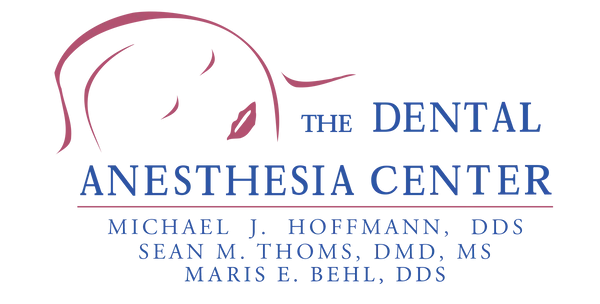Gum recession is a common but often overlooked dental issue that can lead to tooth sensitivity, root exposure, and even tooth loss.
At The Dental Anesthesia Center in St. Louis, we understand that dental procedures—especially for issues like receding gums—can be a source of anxiety. That’s why we provide gentle, sedation-supported care for patients of all ages, including those with special needs or dental phobias.

What Is Gum Recession?
Gum recession occurs when the gum tissue surrounding your teeth pulls back or wears away, exposing more of the tooth or its root. This can create gaps, or “pockets,” between the teeth and gums where bacteria can accumulate, eventually leading to gum disease and even tooth loss.
Common Causes of Gum Recession
Gum recession can happen for several reasons, often gradually over time. Some of the most common causes include:
- Gum Disease (Periodontitis): The #1 cause of gum recession. Bacterial infection inflames and damages gum tissue.
- Aggressive Brushing: Brushing too hard or using a toothbrush with stiff bristles can wear down gum tissue.
- Poor Oral Hygiene: Inadequate brushing and flossing can lead to plaque buildup and gum disease.
- Genetics: Some people are more prone to gum recession, even with excellent oral hygiene.
- Grinding or Clenching Teeth (Bruxism): This puts excessive force on your gums and teeth.
- Tobacco Use: Smoking or chewing tobacco weakens gum tissue and reduces blood flow.
- Hormonal Changes: Fluctuations during pregnancy, menopause, or puberty can make gums more vulnerable.
- Misaligned Teeth or Bite Issues: Uneven pressure on teeth can wear away gum tissue.
- Lip or Tongue Piercings: Jewelry can rub against gums and irritate them.

Signs You May Have Receding Gums
Early detection is key. Watch for these signs:
- Increased tooth sensitivity (especially to hot or cold)
- Teeth appearing longer than normal
- Visible roots or notches at the gum line
- Red, swollen, or bleeding gums
- Loose teeth or shifting bite
- Bad breath that doesn’t go away
How to Stop Gum Recession (or Prevent It)
While gum tissue doesn’t grow back naturally, you can stop gum recession from worsening—and even restore gum health with the right care.
✅ Practice Gentle, Consistent Oral Hygiene
- Use a soft-bristled toothbrush and brush in circular motions.
- Floss daily to remove plaque between teeth.
- Consider using an antibacterial mouthwash.
✅ Address Underlying Causes
- Treat gum disease with professional deep cleanings.
- Use a night guard if you grind your teeth.
- Quit smoking or using tobacco products.
- Correct misaligned teeth with orthodontic care if needed.
✅ See a Dentist Regularly
Routine checkups allow early detection and prevention. At The Dental Anesthesia Center, we offer comprehensive dental exams with sedation options to make your visit as stress-free as possible.
✅ Consider Gum Graft Surgery (If Needed)
In advanced cases, gum grafting may be necessary to cover exposed roots and restore your gum line. We coordinate with periodontists and provide sedation or general anesthesia for patients with dental anxiety, complex needs, or low pain tolerance.
You’re Not Alone — And You Have Options
Gum recession can feel alarming, but with the right approach, it’s manageable. Whether you’re nervous about treatment or seeking a solution for a loved one with special needs, we’re here to help.
The Dental Anesthesia Center in St. Louis provides compassionate care backed by decades of experience in sedation and sleep dentistry. From preventive cleanings to advanced treatments, our team is committed to making your dental visit comfortable, safe, and effective.
